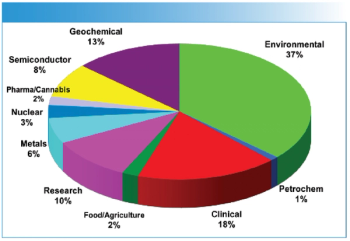
Explore essential best practices for optimizing ICP-MS methodologies, enhancing accuracy, and tackling analytical challenges in diverse sample matrices.
Robert Thomas has more than 30 years of experience in trace element analysis. He is the principal of his own freelance writing and scientific consulting company, Scientific Solutions, based in Gaithersburg, MD.

Explore essential best practices for optimizing ICP-MS methodologies, enhancing accuracy, and tackling analytical challenges in diverse sample matrices.

Explore the evolution of atomic spectroscopy and its impact on science writing, highlighting key publications and industry advancements over the decades.

The following article is adapted from a chapter in the author’s textbook, Practical Guide to ICP-MS and Other AS Techniques: A Tutorial for Beginners, published by CRC Press.

The use of ICP-MS is constantly expanding into an ever-wider variety of applications. We assess the current landscape and where the technique is going in the future.

How can you assess real-world detection capability of an ICP-MS system?

The way the analytical signal is managed in ICP-MS has a direct impact on the results generated. In this first of a two-part series, we explain the fundamental principles of a scanning quadrupole and how measurement protocols can be optimized based on data quality objectives.

A recent investigation found dangerous levels of heavy metals in commercial baby foods. Tighter scrutiny and regulations are needed.

This method detects elements intrinsically present in cells, and because sc-ICP-TOF-MS measures a full mass spectrum, no analytes are missed.

For a number of elements, spectroscopic interferences can have a significant impact on the ability to achieve low detection limits in ICP-MS. We investigate the mechanisms in multi-quadrupole ICP-MS that are designed to remove these interferences.

How to select the optimum atomic spectroscopic technique for orally delivered drugs, based on the J-values described in the validation protocols outlined in USP Chapter

This installment describes the development of two novel X-ray diffraction (XRD) techniques that enable the rapid analysis of samples using handheld instrumentation for remote applications. Both techniques can be applied to unprepared samples in the field, which is a highly favorable characteristic in many applications since the time required for laboratory-based sample preparation is avoided.
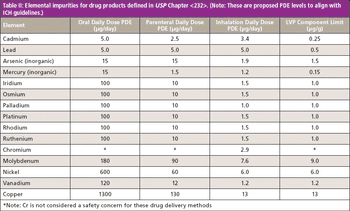
This installment evaluates the application requirements for the determination of 15 elemental impurities in pharmaceutical materials as described in the new United States Pharmacopeia (USP) Chapters and and offers suggestions about which atomic spectroscopic technique might be the most suitable to use.
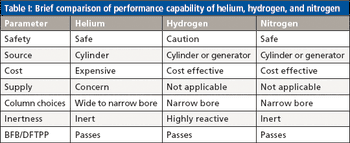
This study focuses on United States Environmental Protection Agency (US EPA) Method 524.3 for volatile organic compounds (VOCs) in water using gas chromatography–mass spectrometry (GC–MS).
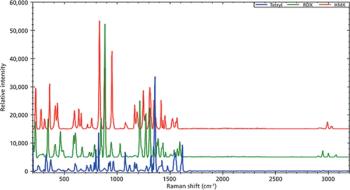
The Raman technique is gaining widespread acceptance as an investigative tool for forensic applications.

A look at ICP–MS, ICP–OES, X-ray fluorescence spectroscopy, and laser-induced breakdown spectroscopy in the areas of research and development, marketing, application, and use of these techniques.
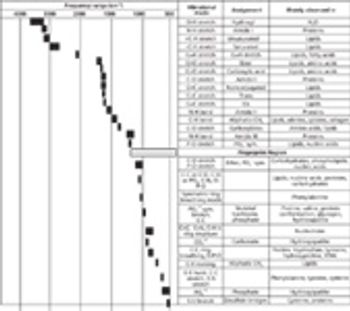
Both Raman spectroscopy and surface-enhanced Raman spectroscopy (SERS) are proving to be invaluable tools in the field of biomedical research and clinical diagnostics.
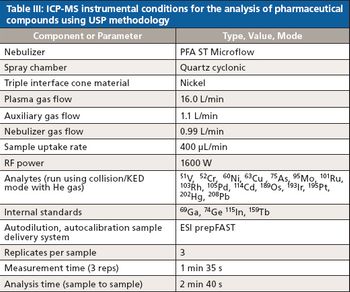
This article describes the use of an in-line, autodilution, and autocalibration sample delivery system coupled to an inductively coupled plasma–mass spectrometry system to analyze a group of over-the-counter pharmaceutical products.
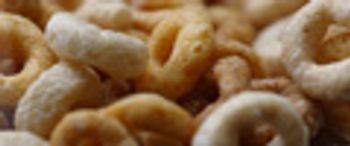
September 2006. The authors discuss the benefits of X-ray fluorescence (XRF) for the determination of elemental nutrients in foodstuffs and X-ray diffraction (XRD) for the measurement and characterization of different compounds used in the pharmaceuticals industry.

Here, the authors discuss a multielement method for the simultaneous determination of inorganic As, Cr, and Se species in potable waters using a HPLC system coupled to a dynamic reaction cell indusctively coupled plasma mass spectrometer.
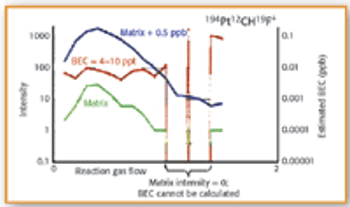
The potential for signal drift, matrix suppression, and spectral interference, in addition to demanding sample preparation, can make geological matrices some of the most difficult to analyze by conventional inductively coupled plasma-mass spectrometry.

This paper describes how analysts at an environmental and geochemical laboratory utilize dynamic reaction cell ICP-MS technology to study the transport and deposition of important trace metals from rainwater.

The authors show that dynamic reaction cell ICP MS can eliminate a number of argon- and carbon-based polyatomic interferences, allowing the determination of many critical elements in problematic organic compounds found in the semiconductor industry.

This installment of the Tutorial series focuses on three important sampling approaches: electrothermal vaporization, desolvation systems, and chromatographic separation devices.

This study investigates the applicability of a quadrupole-based ICP-MS fitted with a dynamic reaction cell (DRC) to analyze high-purity phosphoric and sulfuric acid used in the semiconductor industry. It compares the DRC approach with traditional ICP-MS background reduction techniques to compensate for phosphorus- and sulfur-based interferences and presents data that suggests that the DRC technology can reach the next generation of semiconductor purity levels for these chemicals.

Part 13 of the ongoing series discusses sampling accessories.

Part 12 of the continuing series.

The authors discuss an approach by a manufacturer of calibration standards and certified reference materials to standardize the reporting of uncertainty associated with certified values quoted on a certificate of analysis.

Part 11 of the ongoing series.

Part 11 of the ongoing series.

The tenth installment of this ongoing series.

Published: July 1st 2021 | Updated:

Published: October 16th 2024 | Updated:
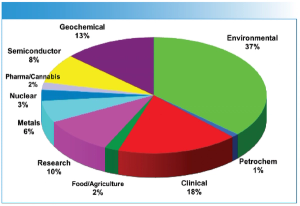
Published: October 9th 2025 | Updated:

Published: October 1st 2021 | Updated:

Published: September 1st 2020 | Updated: